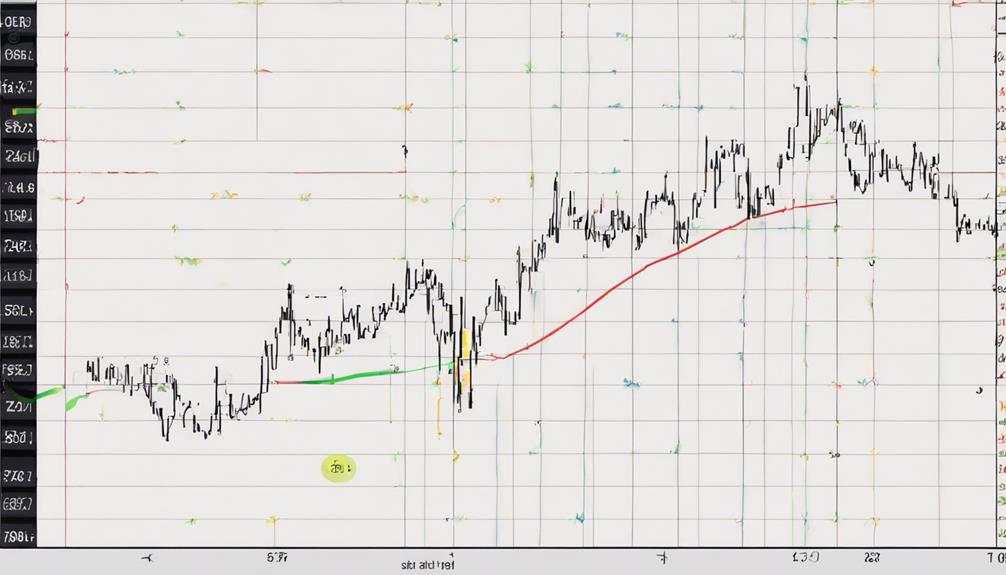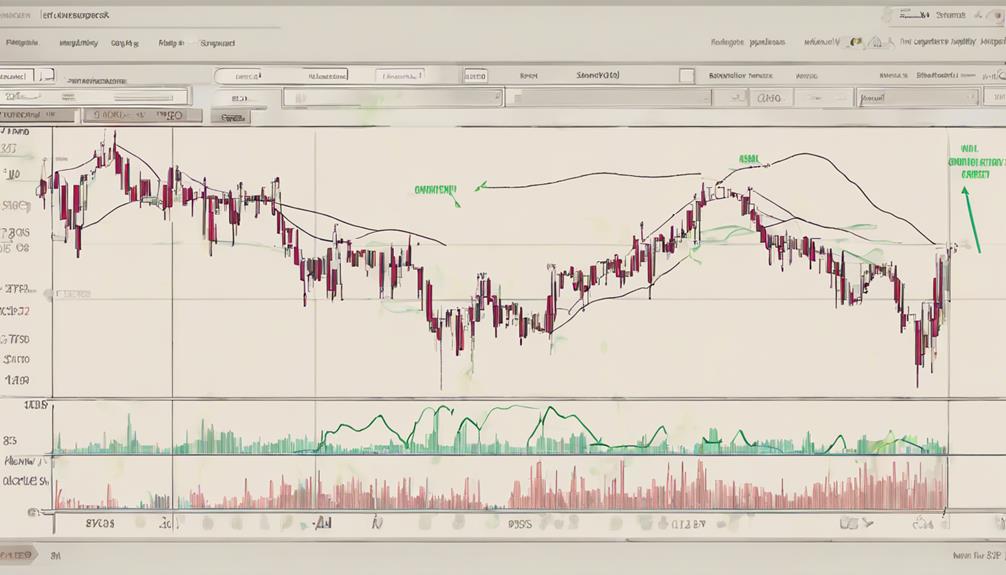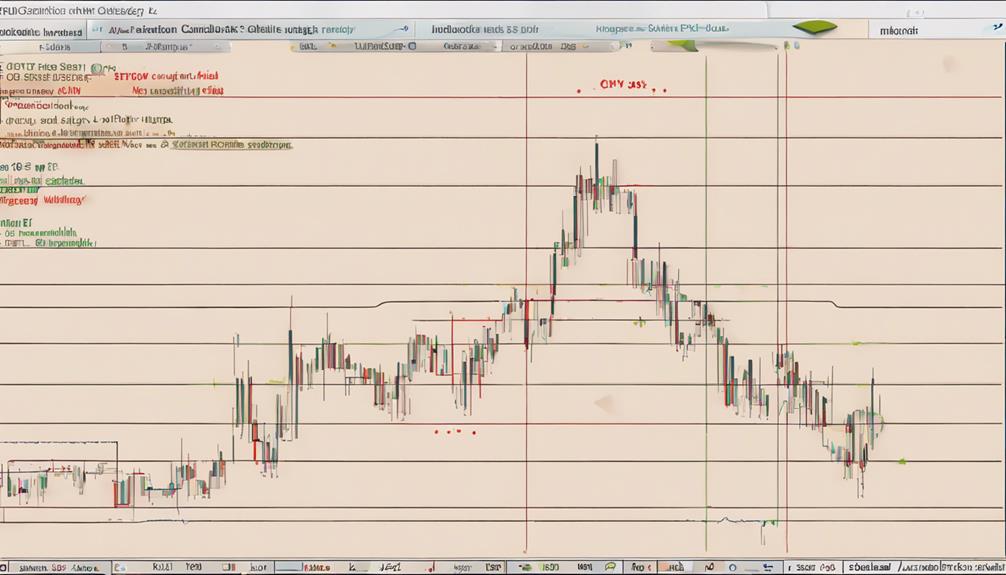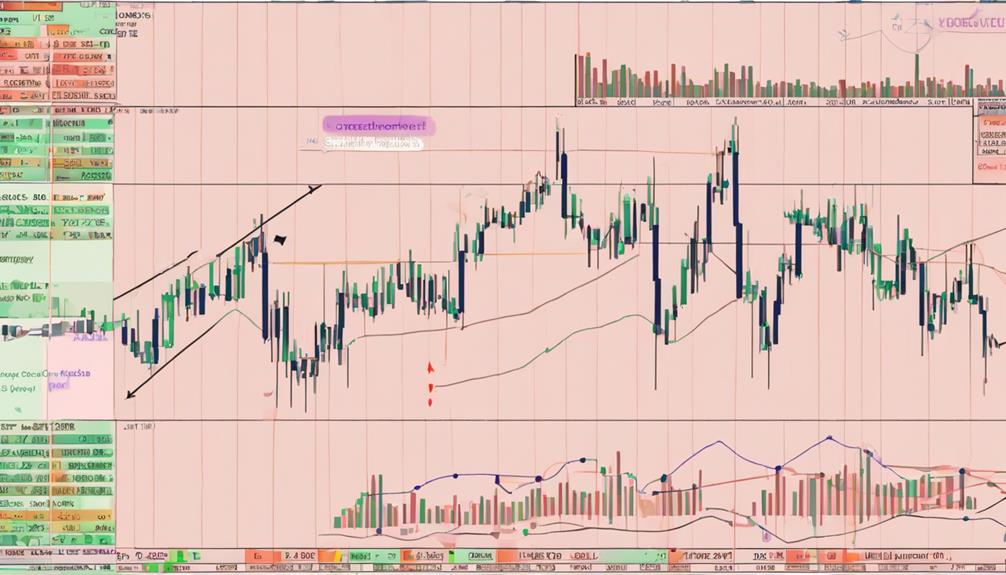Embark on a journey through the intricate world of commodity trading with the Stochastic Oscillator as your guiding compass.
Unravel the nuanced interplay between market dynamics and this powerful indicator, designed to navigate the ebbs and flows of price momentum.
Discover how each oscillation and intersection of %K and %D lines unveils a realm of potential insights waiting to be harnessed.
By understanding the step-by-step process of leveraging the Stochastic Oscillator, you are poised to unlock a realm of strategic possibilities that could redefine your approach to commodity trading.
Stochastic Oscillator Fundamentals
Utilizing the Stochastic Oscillator is essential for comprehending price momentum and identifying potential trends in commodity trading. This technical indicator, developed by George C. Lane, evaluates overbought and oversold conditions by comparing a commodity's closing price to its price range over a specific period.
By plotting %K and %D lines on a Stochastic Oscillator chart, traders can pinpoint optimal entry and exit points based on these readings. Monitoring momentum and divergence through the Stochastic Oscillator can offer valuable insights into market dynamics. Recognizing bullish and bearish divergences can signal possible market reversals, aiding traders in making informed decisions.
Understanding the Stochastic Oscillator's fundamentals is crucial for effectively navigating the complexities of commodity trading.
Understanding Stochastic Oscillator Calculation

To grasp the mechanics behind the Stochastic Oscillator calculation, one must understand its core components, including %K and %D, which play pivotal roles in evaluating price momentum in commodity trading. Here's a breakdown to help you comprehend the calculation process:
- %K compares the current closing price to the lowest low.
- %D is derived from a 3-day SMA of %K, offering a smoother signal line.
- The default period for Stochastic Oscillator calculation is typically 14 days.
- Adjusting the period allows traders to tailor the indicator to different trading styles, such as fast or slow oscillators.
Interpreting Stochastic Oscillator Readings

When analyzing Stochastic Oscillator readings, the focus should be on identifying potential market reversals based on key overbought and oversold conditions. Readings above 80 signal overbought conditions, suggesting a possible price reversal, while readings below 20 indicate oversold conditions, hinting at a potential buying opportunity.
The Stochastic Oscillator generates a buy signal when the %K line crosses above the %D line and a sell signal when it crosses below. Look out for bullish divergence, where the price forms a lower low while the Stochastic Oscillator makes a higher low, indicating a potential upward reversal. Conversely, bearish divergence occurs when the price forms a higher high alongside a lower high on the Stochastic Oscillator, signaling a possible downward reversal.
Analyzing these dynamics is crucial for interpreting Stochastic Oscillator readings effectively.
Implementing Stochastic Oscillator Strategies

Implement Stochastic Oscillator strategies by integrating key technical analysis tools to enhance decision-making in commodity trading.
- Utilize overbought and oversold levels to time your trades effectively.
- Pay attention to divergence signals for potential trend reversals.
- Experiment with adjusting Stochastic Oscillator settings to match different commodities' characteristics.
- Consider your trading style and incorporate Stochastic Oscillator with other technical indicators to adapt to changing market trends.
Optimizing Stochastic Oscillator for Commodity Trading

Optimizing the Stochastic Oscillator for commodity trading involves adjusting its period settings to better suit market dynamics. By fine-tuning these settings, you can enhance the indicator's effectiveness in identifying overbought and oversold conditions in commodity markets.
Additionally, keeping an eye out for bullish and bearish divergences within the Stochastic Oscillator can provide valuable signals for potential market reversals. To further refine your trading strategy, consider combining the Stochastic Oscillator with other technical indicators to gain a comprehensive view of the market.
Integrating price action analysis with the Stochastic Oscillator can also improve the timing of your commodity trades, increasing the probability of successful outcomes. Remember, optimizing the Stochastic Oscillator requires a strategic approach that considers both period settings and market conditions.
What are the Best Strategies for Commodity Trading Using Stochastic Oscillator?
One of the best strategies for commodity trading is to predict price reversals with stochastic oscillator. This technical tool helps traders identify overbought and oversold conditions in the market, providing entry and exit points. By using this strategy, traders can capitalize on potential price reversals and maximize their profits.
Frequently Asked Questions
What Is Stochastic 14 3 3?
Stochastic 14 3 3, a key setting in technical analysis, uses specific time periods for price momentum calculations. It offers swift and precise signals, favored by traders for its responsiveness. Adjust parameters to suit your trading style and market conditions.
How Do You Trade With a Stochastic Oscillator?
When trading with a stochastic oscillator, you identify overbought and oversold levels for commodities. Generate buy/sell signals with %K and %D line crossovers. Watch for divergences between price and oscillator. Adjust settings for market volatility.
What Is 5 3 3 Stochastic Settings?
In 5 3 3 Stochastic settings, the numbers signify key calculation periods for %K, %D, and smoothing. This setup offers speedy signals for traders seeking swift insights into market extremes. It's like a turbocharged tool for spotting overbought and oversold conditions efficiently.
What Is the Best Combination for Stochastic Oscillator?
For the best combination with the Stochastic Oscillator, consider pairing it with moving averages, support/resistance levels, volume analysis, and other momentum indicators like RSI. Experiment with different timeframes to optimize your commodity trading strategies effectively.
Conclusion
In conclusion, mastering the Stochastic Oscillator can be likened to navigating a ship through turbulent waters. By understanding its fundamentals, calculating readings, and implementing strategies, you can steer your commodity trading journey towards success.
Just as a skilled captain adjusts sails to ride the waves, optimizing the Stochastic Oscillator allows you to adapt to market conditions and make informed decisions.
Embrace this powerful tool, and chart a course to profitable trading ventures. Smooth sailing awaits.
